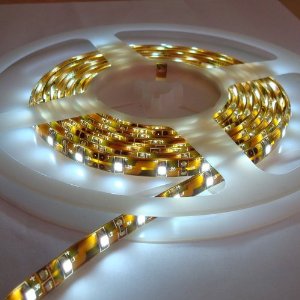What You Should Know To Benefit From New Ultra Low Energy Domestic LED Lighting.
Whether you are simply curious about the new LED home lighting solutions starting to appear in mainstream DIY and hardware supply stores, or already know a bit about LED technology and are keen to do your bit to help in the coming struggle against climate change (global warming) or just want to take steps to slash your fuel bills, the fact is that LED lighting is the future.
So you’re going to have to come to grips with this and learn what the future of domestic lighting means to you personally. This article aims to clear up some of the confusion that surrounds the various low energy domestic lighting solutions currently available to consumers, looks at what you need to know about low energy lighting and installing low energy light bulbs and provides a simple guide and helpful LED lighting advice for anyone unfamiliar with evaluating and buying LED home lighting.
If you just want to jump in though then follow these links to check out some of the best LED spot lights and standard globe shaped LED light bulbs available these days.
Some Background About Domestic Lighting Solutions
The lighting systems we are most familiar with in a domestic setting are based on GLS (General Lighting Service ) light bulbs – these are incandescent filaments that burn (quite literally) and in so doing convert their input energy into about 98% heat (as you would expect for something that is burning) with the remainder given off as incidental light.
GLS bulbs have a typical lifespan of about 1000 hours, at which point, having converted your these-days-not-very-cheap electricity into vastly more heat than light, they need to be replaced. Put another way, if you started out in life with a single GLS light bulb that you used for just 4 hours per evening, you would need to re-purchase well over 100 replacements during the course of your life.
At approximately $1 per light bulb say, that’s $100. And if you think that’s a high price to pay for having a little light in your life, the cost of running your GLS bulb far exceeds the replacement costs at somewhere above $1000 in electricity bills.
And that’s just ONE measly little light bulb for a few small hours each evening. Now you know why your electricity bill is so much bigger that you would like it to be. There’s more here about calculating lighting costs if you’re interested.
So regular GLS incandescent light bulbs are economically a poor choice for you directly. But they are also a very bad way to light the world in general. Not only are you (and everyone else) generating a huge amount of waste heat (remember: 2% illumination, 98% heat radiation), there is also the energy and heat required by the lighting manufacturers to make all those replacement light bulbs (we’ll ignore the disposal issue, but that’s yet another concern).
Needless to say, governments around the world are alarmed by this and many governments in the developed world (where frankly the problem is worst) have already enacted legislation to phase out the production and use of standard incandescent lamps, with timescales as short as 2 to 3 years.
Yes, you read that correctly – very soon you will not be able to buy GLS light bulbs anymore so it’s time to start getting energy savvy.
Related:






